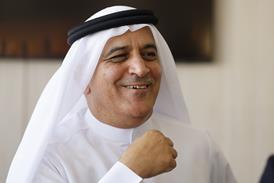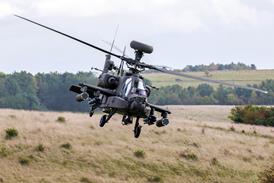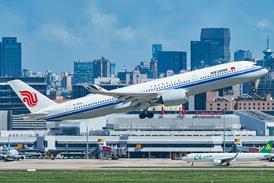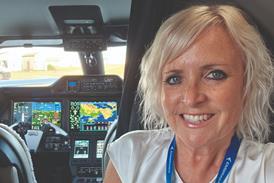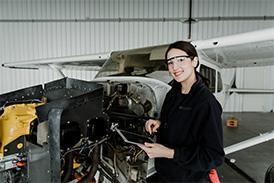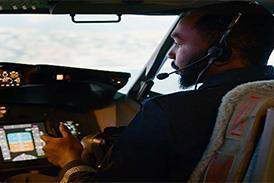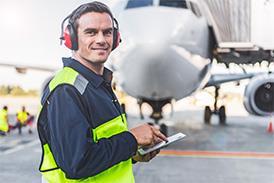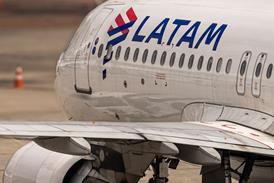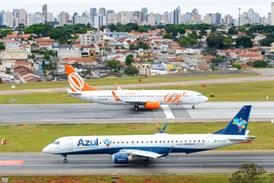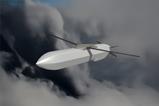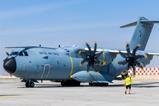Prospective customers will be in attendance when General Atomics Aeronautical Systems (GA-ASI) and Saab fly an MQ-9B remotely piloted aircraft configured for airborne early warning and control (AEW&C) duties next year, with service entry being offered before the end of this decade.
The partners in mid-November stated that the surveillance combination is to get airborne for the first time “in the summer of 2026” from GA-ASI’s Desert Horizon test site in Southern California. That followed their announcement of the joint development at the Paris air show in June 2025.
A pod-housed active electronically scanned array radar developed by Saab will be carried beneath each wing of the medium-altitude, long-endurance (MALE) type, with an additional centreline pod to house data processing and other associated equipment.

“Several years ago, we looked at where is the gap in the market: where should there be additional capability,” says David Moden, senior sales director airborne early warning at Saab’s Surveillance business unit.
The feedback received from operators, plus other nations who were unable to procure manned AEW&C systems due to their expense, was: “We need persistence, we need endurance,” he says. Reduced risk at an asset-level was also requested.
“The unmanned air vehicle seemed to fit all of those check-boxes,” he says, with Saab’s subsequent collaboration with GA-ASI the outcome of a “very thorough evaluation” of the market.
“We think it’s a fantastic partnership, with General Atomics being the leader in MALE systems and Saab being a leader in airborne AEW,” he adds.
The Swedish company has more than 35 years of experience in the field, with “our technology on over 30 manned platforms worldwide”, he notes.
That includes its latest Erieye ER radar technology, which is used with the Bombardier Global 6000/6500-based GlobalEye system now flown by the United Arab Emirates, on order for Sweden and planned for purchase by France. That adaptation of the ultra-long-range business jet has a mission endurance of up to 12h.
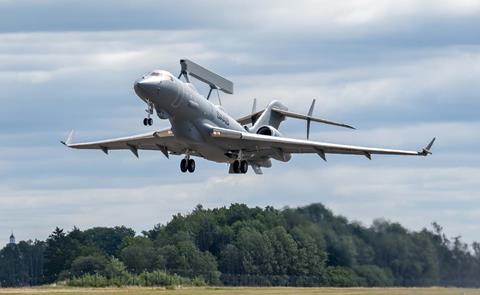
“AEW is the ideal mission for an unmanned, semi-autonomous vehicle,” says Satish Krishnan, GA-ASI’s vice-president, MQ-9B international. “You know where the borders are and where the enemy aircraft can come from. We can do 16-20h of endurance, and are much cheaper to operate than manned platforms, so it gives you a force multiplier.
“We, like Saab, had been looking for many years to find the ideal partner,” he said at the Dubai air show on 18 November. “The two companies have a very similar DNA – we invest ahead of need, unlike some traditional defence primes who might wait for a request for proposals. We have leaned forward and developed the application.”
GA-ASI aims “to deliver a persistent AEW&C solution to our global operators that will protect them against sophisticated cruise missiles as well as simple but dangerous drone swarms”.
“We are in an integration phase now in the US, to mount the pods and system on the MQ-9B,” Moden says. “We will fly – with customer participation – in the summer of 2026.”
While work will initially focus on demonstrating the system’s capabilities in an air-to-air mode, he notes: “This is a truly multi-domain radar: air, sea and land,” with the ability to simultaneously detect, identify and track objects across each of those sectors.
“It is a very mature radar and a very mature aircraft,” Krishnan notes. “We have got the antennas in the lab, and people are working around the clock to get this integrated.
“We don’t expect a lot of challenges to go from our first flights to having a fieldable product,” he adds.
Moden, meanwhile, notes: “With an order placed in 2026 we would have the first systems fielded and operational in 2029.”
GA-ASI is prime contractor in promoting the system, and Krishnan says: “Every briefing we have done globally, there has been tremendous interest.”
“We have a significant amount of interest in many parts of the world for this system,” Moden adds. “We are actively engaging with those countries now, to not only show them the capability, but also listen to what their requirements are so we can further define what that roadmap is going to be.
“We see some countries having this as a sole AEW capability, but we also see tremendous interest in this system as an extension to a manned AEW platform, for manned-unmanned teaming,” he says.
“Some customers will ask for a mission-proven command and control system, others will just have our data and take it down to their own system.” The platform will be equipped with both a line-of-sight connectivity and satellite communications fit.
Multiple MQ-9Bs could be used on rotation to maintain a constant orbit, or to deliver broader coverage across an area of interest.
“Eyes in the sky forever – that’s what this enables,” Krishnan suggests.
The companies intend to later offer the capability on an MQ-9B fitted with GA-ASI’s short take-off and landing (STOL) wing, with that version to potentially be of application for use aboard aircraft carriers.
The STOL wing featured on the US airframer’s Mojave demonstrator, which conducted trials from the UK Royal Navy’s (RN’s) flagship vessel HMS Prince of Wales in November 2023.

In its Strategic Defence Review publication released earlier this year, the UK Ministry of Defence outlined its ambition for the RN’s two aircraft carriers to in the future embark hybrid air wings combining a mix of uncrewed aerial systems and manned platforms.
The UK Royal Air Force has already fielded a development of the MQ-9B under the service name Protector RG1, with the type having recently having taken over frontline duties from its now-retired MQ-9 Reaper fleet.




